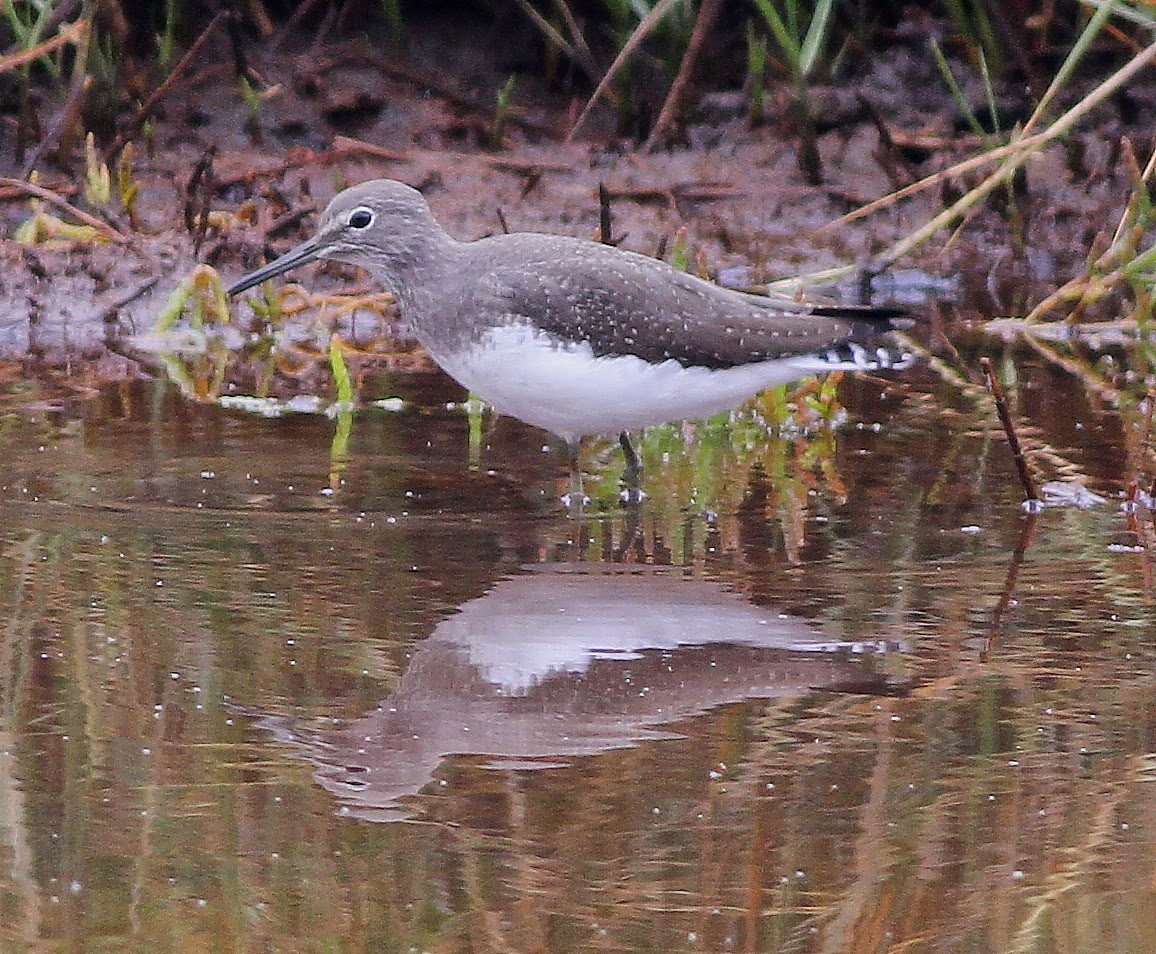It's not uncommon to hear or see Green Sandpipers at Middlebere from July to the following Spring. But normally they are either flying over the marsh or flying rapidly in front of the hide before landing one out of view. So it was a real bonus when one dropped in on the small pool in front of the hide for 2 or 3 minutes. Not long enough to really enjoy it, but long enough to get some photos. But I'm not going to complain, given it's only about the second time I've seen one on this pool. This is a first Winter Green Sandpiper. Now I just need to photograph an adult Green Sandpiper.
Green Sandpiper: The fine spotting on the dark upperparts, clean cut white underparts, short eye stripe, strongly barred tail & dark green legs separates this from a Wood Sandpiper. Hearing the distinctive call as it flew in & seeing its black underwings & clear white rump also sorted the identification out before it landed
Green Sandpiper: The broad spotting on the edges of the tertials indicates this is a juvenile/1st Winter. An adult would have much finer spotting
Green Sandpiper: The relatively unstreaked head and lightly streaked breast indicates this is a 1st Winter bird. There are some great photos of aging of Green Sandpipers available in the excellent ringing PDF download Green Sandpiper from the Identification Atlas of the Birds of Aragon. It certainly is a lot more useful than my ancient Guide to the Identification and Ageing of Holarctic Waders
Wood Sandpiper: A winter Wood Sandpiper to compare. Note, the more scaly edgings to the golden brown upperparts, the less defined breast which runs more into the white belly. Also the stronger pale supercilium and the more yellowish-green legs. Desert Coursers, Gujarat, India (18 Jan 14)
Wood Sandpiper: A winter Wood Sandpiper to compare. Note, the more scaly edgings to the golden brown upperparts, the less defined breast which runs more into the white belly. Also the stronger pale supercilium and the more yellowish-green legs. Desert Coursers, Gujarat, India (18 Jan 14)




